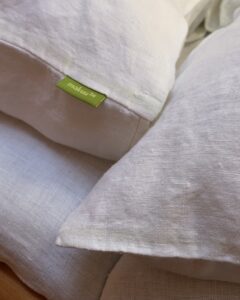We are constantly studying the history of hemp and its unique properties. Hemp fabric is an environmentally friendly, hypoallergenic and durable material that allows the skin to breathe and does not become electrified. Hemp is used to make not only clothes and textiles, but also 25 thousand other products. A hectare of hemp produces 4 times more cellulose than forests, and its production requires less water and chemicals, prevents soil erosion and reduces CO2 levels. So why are there so few hemp products and the fabric so expensive?
Hemp has been used for over four thousand years to make clothing, underwear, sails and ropes. Until 1820, 80% of textiles were made from hemp, until cotton became popular. In 1961, hemp cultivation was banned, but now most countries allow the cultivation of industrial hemp, which is safe for humans.
And here is the good news. Growing the plant is again of interest: it is environmentally friendly, virtually waste-free, profitable, and the products have unique beneficial properties. It is obvious why we chose this particular fabric. Our idea to renew the use of hemp fabric in seafaring and in the marine climate was partly connected with history.
About the Fabric Used in makuu™ Products
In our production, we use fabric woven in Eastern Europe. Our factory sources the hemp fibers from China, the historical homeland of the plant. The hemp is grown, harvested, and processed into fiber before being transported to Europe.
A significant portion of hemp fabrics produced in Europe use yarn spun from hemp grown in China. The reason for this is primarily due to the limited cultivation of hemp for textile use within Europe and the relatively small number of processing facilities that can handle hemp on an industrial scale.
While hemp is grown in Europe, the majority of it is not cultivated specifically for textile purposes. Much of the hemp grown in Europe is used for other purposes, such as producing seeds, oil, and other industrial products. The cultivation of hemp for textile-grade fiber requires specific conditions and processing facilities that are less prevalent in Europe. China is one of the largest producers of hemp in the world, with a well-established infrastructure for processing hemp into yarn suitable for textiles.
There are only a few processing plants in Europe that can handle the entire process of turning hemp stalks into yarn. The lack of infrastructure means that even if hemp is grown in Europe, the raw material often needs to be sent abroad, primarily to China, for processing into yarn. As a result, even though a fabric might be woven in Europe, it is often made from yarn that originates in China. Not all manufacturers openly disclose this aspect.
Our long-term vision is to establish our own hemp processing facilities in Finland. We would be happy to collaborate and contribute to this development.
How the Fiber is Made
Hemp plants are planted closely together. After the leaves fall, the stalks are cut and left on the ground. Exposure to rain and sun softens the stalks and returns minerals to the soil. The raw material is then collected, the fibers are separated, bleached, and dried. Male plants produce finer, softer fibers used for textiles, while female plants provide coarser fibers for technical fabrics, ropes, and cords. Hemp fabric is the only plant-based material that doesn’t degrade in seawater. Male plant fibers are used for creating textiles, including dress fabrics, suit materials, denim, and knitwear.
Makuu Fabric and Production
We entrusted the selection of textile fibers to our factory, which has spent years finding the best suppliers. This family business, with over 35 years of history, employs many long-term workers. We personally visited the factory to ensure its commitment to sustainability and ethical practices. The factory specializes in linen home textiles and recently began producing hemp products. The fabric is dyed on-site using GOTS-certified dyes, ensuring color durability. We recommend using liquid detergents, a short wash cycle up to 60°C, and avoiding direct sunlight to preserve color. For a “vintage look,” drying in the sun can be beneficial.
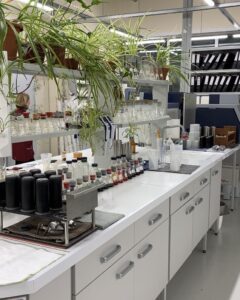
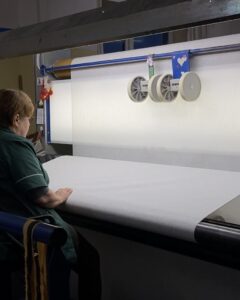
Labels and Packaging
Makuu’s Green Labels
Our labels are also produced in Eastern Europe, in the same city as the fabric. A small, family-run factory creates them. We visited this production to confirm that their values align with our sustainability goals. We plan to use more eco-friendly materials for our labels in the future but currently have chosen our green woven labels.
We choose Paptic® packaging for our products because it is a sustainable material. We are committed to sustainability and responsible consumption.
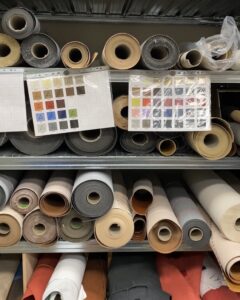
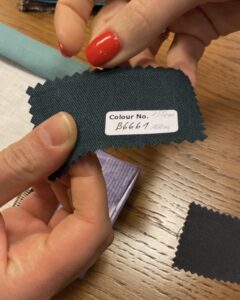
Fabric Care
The fabric is pre-shrunk, minimizing the risk of shrinkage after washing. Wash hemp bedding at temperatures up to 60°C by hand or on a short cycle with similar colors. Use liquid detergents or fully dissolve powder in water. Hemp fibers absorb moisture easily, and undissolved powder particles can cause temporary stiffness. Over time, the fabric will soften again. Like linen, hemp becomes softer with each wash without losing its shape. You can use a dryer and iron on the “linen” setting. Direct sunlight may cause fading, but it can also enhance a relaxed vintage look. For heavy stains, dry cleaning is acceptable.
Name Origin
Makuu is a play on words: “Ma” is an ancient Chinese term for “hemp,” while “Makuu” is a Finnish word meaning “lying down,” though it’s not separately used in everyday language. For instance, “Makuulla” means “lying down,” “makuupussi” means “sleeping bag,” and “makuuhuone” means “bedroom.”
Our slogan, “Makuualla kohti unelmiasi,” is both poetic and evocative in Finnish. It translates to “lying down towards your dreams” or “in a lying position towards your dreams” in English. This phrase beautifully captures a sense of relaxation and aspiration, perfectly aligning with our focus on comfort and quality, even as we pursue our dreams.
In Conclusion
Makuu™ bedding is designed primarily for yachts and remote houses on the seashore, but it is not limited to this. Having gone through the discomfort of humid conditions, heat and cold, we came to this idea. All that is offered today for everyday life in such a house is mainly either cotton or a mixture of cotton and polyester. Such a mixture of fabric tends to retain dust particles, as a result of which dust mites can also start. Hemp fabric offers antibacterial and antiseptic properties, making it ideal for people with allergies. We are inspired by the history and benefits of hemp, creating products with Finnish quality and respect for the environment.
